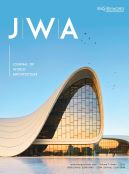Abstract
Owing to the constant modernization and urbanization of China, most cities have subways, and the total power consumption of subway stations has been rising, which contradicts with China’s green goals. In this regard, energy consumption indicators for major energy use projects in subway stations should be established, comprehensive evaluation and detailed research on the current situation of subway operation should be conducted, and specific energy-saving measures should be taken from a diversified perspective. It is crucial to systematically sort out the principle of sub-item energy consumption in subway stations, and practice and explore the specific simplification measures of the principle model of sub-item energy consumption, so as to lay a solid foundation for achieving the goal of reducing energy consumption of subway stations.
References
Song Z, Dong L, Tao L, et al., 2020, Research on the Calculation Method of the Stress and Deformation of the Horizontal Pipe Shed of the Flat Roof Straight Wall Subway Station Based on the Transfer Matrix. Tunnel Construction, 2020(7): 54–56.
Wang Z, Zhang S, Qiu L, 2019, Design Associated Calculation Flow Model and Process Mining Method for Plasticizing Energy Consumption Analysis. Computer Integrated Manufacturing System, 2019(2): 267–278.
Yang Z, Lin B, Zhao J, et al., 2018, Design and Research on Energy Consumption Load and Energy Saving Optimization Control Scheme of Hefei Metro Station. Proceedings of the Fifth National Smart City and Rail Transit Science and Technology Innovation Annual Conference, 2018(4): 92–94.
Xie D, 2019, Energy Saving and Emission Reduction Assessment Model of Urban Rail Transit Based On The Time-Space Distribution Characteristics Of Passenger Flow, dissertation, Beijing Jiaotong University, 58–60.
Zhuang H, Zhou J, Chen S, et al., 2019, Shaking Table Model Test Study on Seismic Response of Subway Underground Structures in Slightly Inclined Liquefiable Sites. Earthquake Engineering and Engineering Vibration, 39(2): 119–121.
Zhang S, 2018, Research on Structural Scheme Optimization and Durability of Pillarless Large Span Metro Station in Water rich Round Gravel Stratum, Xi’an University of Architecture and Technology, 2018(8): 63–65.
Qiu C, 2018, Research on Application of BIM Technology in Operation and Maintenance Management of Metro Station Facilities and Equipment and Its Economic Benefits, dissertation, Shijiazhuang Railway University, 71–73.
Fan J, 2018, Research on Load Calculation of Subway Environmental Control System Based on Estimation of Passenger Dwell Time, dissertation, Beijing Jiaotong University, 2018(5): 62–64.
Du Y, 2019, Research on the Impact of Lightning Activities and Electromagnetic Fields on Metro and Stations in Chengdu. Chengdu University of Information Engineering, 2019(6): 85–87.
